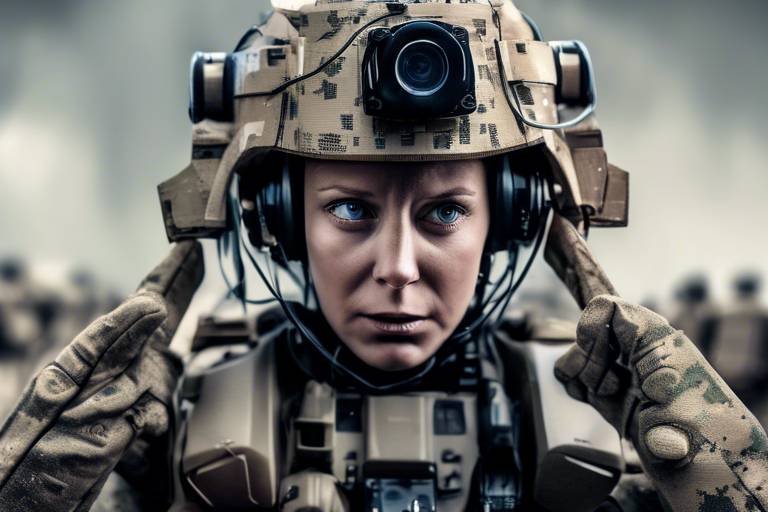AI-Enhanced Thermal Imaging for Night Operations
In the dark of night, when visibility is at its lowest, the world transforms into an enigma. But what if I told you that technology has made it possible to see through that darkness? Enter AI-enhanced thermal imaging, a groundbreaking advancement that is revolutionizing the way we operate in low-light conditions. This technology not only allows us to visualize heat emitted by objects but also integrates artificial intelligence to interpret that data with astonishing clarity and accuracy.
Imagine a soldier on a night mission, navigating through dense foliage. With traditional thermal imaging, they might see vague shapes and outlines, but with AI enhancements, those shapes become clear targets with identifiable features. This level of detail can mean the difference between success and failure in critical operations. As we delve deeper into this fascinating intersection of AI and thermal imaging, we will explore its applications across various fields such as the military, search and rescue, and wildlife monitoring.
The significance of AI-enhanced thermal imaging cannot be overstated. In military operations, it provides tactical advantages by improving surveillance and target acquisition. In search and rescue missions, it accelerates the process of locating individuals in perilous conditions. And in wildlife monitoring, it offers insights into animal behavior that were previously unattainable. As we navigate through this article, prepare to uncover how these advancements are shaping the future of night operations.
Thermal imaging technology works by detecting infrared radiation, which is emitted as heat by all objects. Unlike traditional cameras that rely on visible light, thermal cameras capture this infrared radiation, allowing users to visualize temperature differences in their surroundings. This ability is especially important in low-light conditions where conventional vision fails.
At its core, thermal imaging comprises several key components:
- Thermal Sensor: The heart of the thermal camera, it detects infrared radiation and converts it into an electrical signal.
- Optics: Focuses the infrared radiation onto the sensor, enhancing the image quality.
- Display: Shows the processed thermal image, often using color palettes to indicate different temperatures.
In essence, thermal imaging provides a unique perspective of our environment, revealing heat signatures that are invisible to the naked eye. This capability is crucial for various applications, particularly during the night when visibility is compromised.
Artificial intelligence has taken thermal imaging to new heights. Traditional thermal imaging systems often struggle with image clarity and object recognition, particularly in complex environments. However, with the integration of AI algorithms, these challenges are being overcome. AI enhances thermal imaging by employing machine learning and neural networks to improve image clarity and accuracy.
Advanced image processing techniques are essential for optimizing thermal images. These methods include:
- Noise Reduction: Eliminates unwanted artifacts that can obscure critical details.
- Contrast Enhancement: Amplifies the differences in temperature to make features more distinguishable.
These techniques ensure that the thermal images produced are not only clearer but also more reliable for interpretation, enabling users to make informed decisions quickly.
Noise in thermal images can be a significant barrier to clarity. AI-enhanced systems utilize various noise reduction strategies, such as:
- Spatial Filtering: Reduces noise by averaging pixel values in a local neighborhood.
- Temporal Filtering: Analyzes changes over time to distinguish between noise and actual thermal events.
These strategies work together to deliver images that are crisp and clear, allowing for accurate assessments in real-time.
Enhancing contrast in thermal images is crucial for visibility. Techniques such as histogram equalization and adaptive contrast adjustment are employed to highlight thermal features, making them more interpretable. These methods ensure that even the faintest heat signatures are visible, providing users with a comprehensive view of their environment.
AI-enhanced thermal imaging has transformative applications in military operations. It aids in surveillance, allowing soldiers to identify potential threats without exposing themselves to danger. Additionally, it enhances target acquisition, ensuring that engagements are precise and effective. The benefits are clear:
- Improved situational awareness
- Increased operational efficiency
- Enhanced safety for personnel
In search and rescue missions, every second counts. AI-enhanced thermal imaging significantly improves the efficiency and success rates of these operations. Rescuers can quickly locate individuals in challenging conditions, such as dense forests or disaster-stricken areas, where visibility is severely limited. The technology enables teams to cover vast areas rapidly, increasing the chances of finding survivors.
Thermal imaging technology is invaluable in wildlife monitoring, providing insights into animal behavior and habitats that were previously difficult to obtain. AI enhancements facilitate better data collection and analysis, allowing researchers to study animal movements, population dynamics, and environmental interactions. This information is crucial for conservation efforts and understanding ecosystem health.
The future of thermal imaging is incredibly promising, with continuous advancements in AI technology. Emerging trends include:
- Integration with Drones: Enhancing aerial surveillance capabilities.
- Real-time Data Analysis: Providing instant insights for decision-making.
- Miniaturization: Making thermal imaging systems more portable and accessible.
As technology evolves, we can expect even more innovative applications that will reshape how we approach night operations across various fields.
Q1: What is thermal imaging?
A1: Thermal imaging is a technology that detects infrared radiation emitted by objects, allowing users to visualize heat differences in their environment.
Q2: How does AI enhance thermal imaging?
A2: AI enhances thermal imaging by improving image clarity, object recognition, and real-time data analysis through advanced algorithms and machine learning techniques.
Q3: What are some applications of AI-enhanced thermal imaging?
A3: Applications include military operations, search and rescue missions, and wildlife monitoring, among others.
Q4: What are noise reduction strategies in thermal imaging?
A4: Noise reduction strategies involve techniques to eliminate unwanted artifacts in images, ensuring clarity and accuracy in thermal imaging.
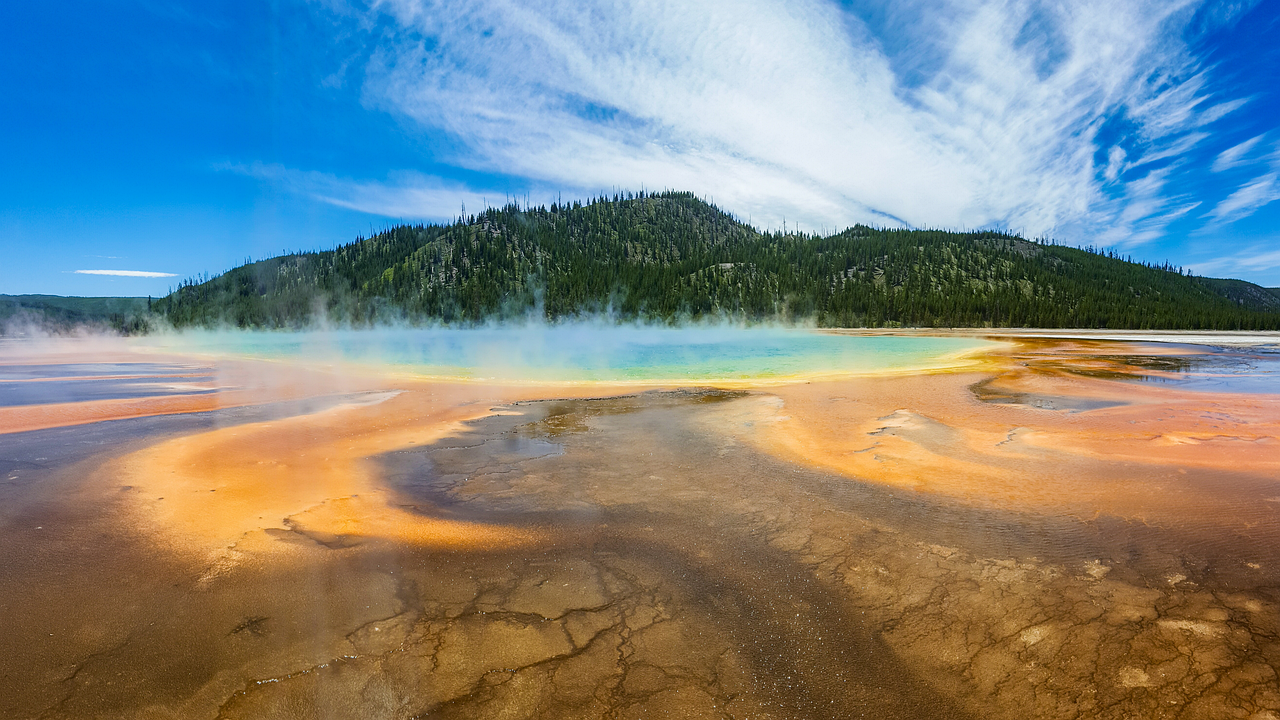
Understanding Thermal Imaging
Thermal imaging is a fascinating technology that allows us to see the world in a completely different light—quite literally! By detecting infrared radiation, thermal cameras can visualize the heat emitted by objects, making it an invaluable tool in various fields. Imagine walking through a dark forest at night; without a thermal imaging device, you could easily miss the warm outline of an animal hiding in the underbrush. This technology transforms the invisible into the visible, helping us make sense of our surroundings even in the most challenging conditions.
At its core, thermal imaging operates on a simple principle: everything emits heat, and that heat can be detected and visualized. The components of a thermal imaging system typically include a thermal sensor, optics, and a display. The thermal sensor detects infrared radiation and converts it into an electronic signal. This signal is then processed and displayed as a thermal image, where different colors represent varying temperatures. For example, warmer objects may appear in shades of yellow or red, while cooler ones might show up in blue or purple. This color-coding makes it easier for users to identify hot spots and cold areas quickly.
The significance of thermal imaging becomes particularly clear in low-light conditions. Traditional cameras rely on visible light, which can be scarce at night or in smoky environments. Thermal imaging, however, does not require light to function, making it an essential tool for military operations, search and rescue missions, and even wildlife monitoring. The ability to detect heat signatures can be the difference between success and failure in critical situations. For instance, rescuers can locate a lost hiker in the dark much faster with thermal imaging, as they can see the heat emitted by the person's body, even if they are hidden under foliage.
In summary, thermal imaging is a powerful technology that opens up new possibilities for visibility in darkness. Its ability to detect and visualize heat makes it essential across various fields, enhancing safety and efficiency. As we continue to explore the advancements in this technology, particularly with the integration of artificial intelligence, we can expect even more impressive capabilities in the near future.
- What is thermal imaging? Thermal imaging is a technology that detects infrared radiation and visualizes heat emitted by objects, allowing users to see in low-light conditions.
- How does thermal imaging work? Thermal imaging works by using a thermal sensor to detect infrared radiation, which is then converted into an electronic signal and displayed as a thermal image.
- What are the applications of thermal imaging? Thermal imaging has applications in various fields, including military operations, search and rescue, wildlife monitoring, and building inspections.

The Role of AI in Thermal Imaging
Artificial Intelligence (AI) is revolutionizing the world of thermal imaging, taking this already impressive technology to new heights. Imagine being able to see in complete darkness, not just with a simple heat signature, but with enhanced clarity and detail that allows for precise identification and analysis. That's the power of AI-enhanced thermal imaging. By integrating machine learning algorithms and neural networks, thermal imaging systems are becoming more adept at distinguishing between various heat sources, effectively turning a once rudimentary tool into a sophisticated analytical device.
At its core, AI works by analyzing vast amounts of data and learning from it. In thermal imaging, this means that the system can learn to recognize patterns and features within thermal images that may not be immediately apparent to the human eye. For instance, distinguishing between a human body and an animal in low-light conditions can be a challenge. However, with AI algorithms trained on extensive datasets, these systems can improve their object recognition capabilities significantly. This not only enhances the quality of the images but also increases the reliability of the information derived from them.
One of the most exciting aspects of AI in thermal imaging is its ability to process images in real-time. Traditional thermal imaging systems often struggle with latency, which can be detrimental in time-sensitive situations like military operations or search and rescue missions. AI algorithms can analyze incoming data streams almost instantaneously, allowing operators to make informed decisions on the fly. This real-time processing capability is critical in scenarios where every second counts, making AI-enhanced thermal imaging an invaluable tool for professionals in high-stakes environments.
Moreover, the integration of AI allows for advanced image processing techniques that significantly enhance the quality of thermal images. Two key methods are:
- Noise Reduction: Reducing unwanted noise in thermal images is essential for clarity. AI algorithms can identify and filter out noise, resulting in cleaner, more interpretable images.
- Contrast Enhancement: By improving the contrast of thermal images, AI helps to highlight important features that may otherwise be obscured, making it easier to analyze the data.
These advancements are not just technical improvements; they translate into real-world benefits. For instance, in military applications, enhanced image clarity can lead to more effective surveillance and target acquisition, while in search and rescue operations, clearer images can help rescuers locate individuals more efficiently. The implications of AI in thermal imaging are vast, making it a game-changer across various fields.
- What is thermal imaging? Thermal imaging is a technology that detects infrared radiation, allowing users to visualize heat emitted by objects, which is particularly useful in low-light conditions.
- How does AI improve thermal imaging? AI enhances thermal imaging by improving image clarity, object recognition, and real-time processing, making it easier to analyze thermal data accurately.
- What are some applications of AI-enhanced thermal imaging? Key applications include military operations, search and rescue missions, wildlife monitoring, and industrial inspections.
- Can AI thermal imaging systems work in complete darkness? Yes, AI-enhanced thermal imaging systems are designed to function effectively in complete darkness, relying on heat signatures rather than visible light.
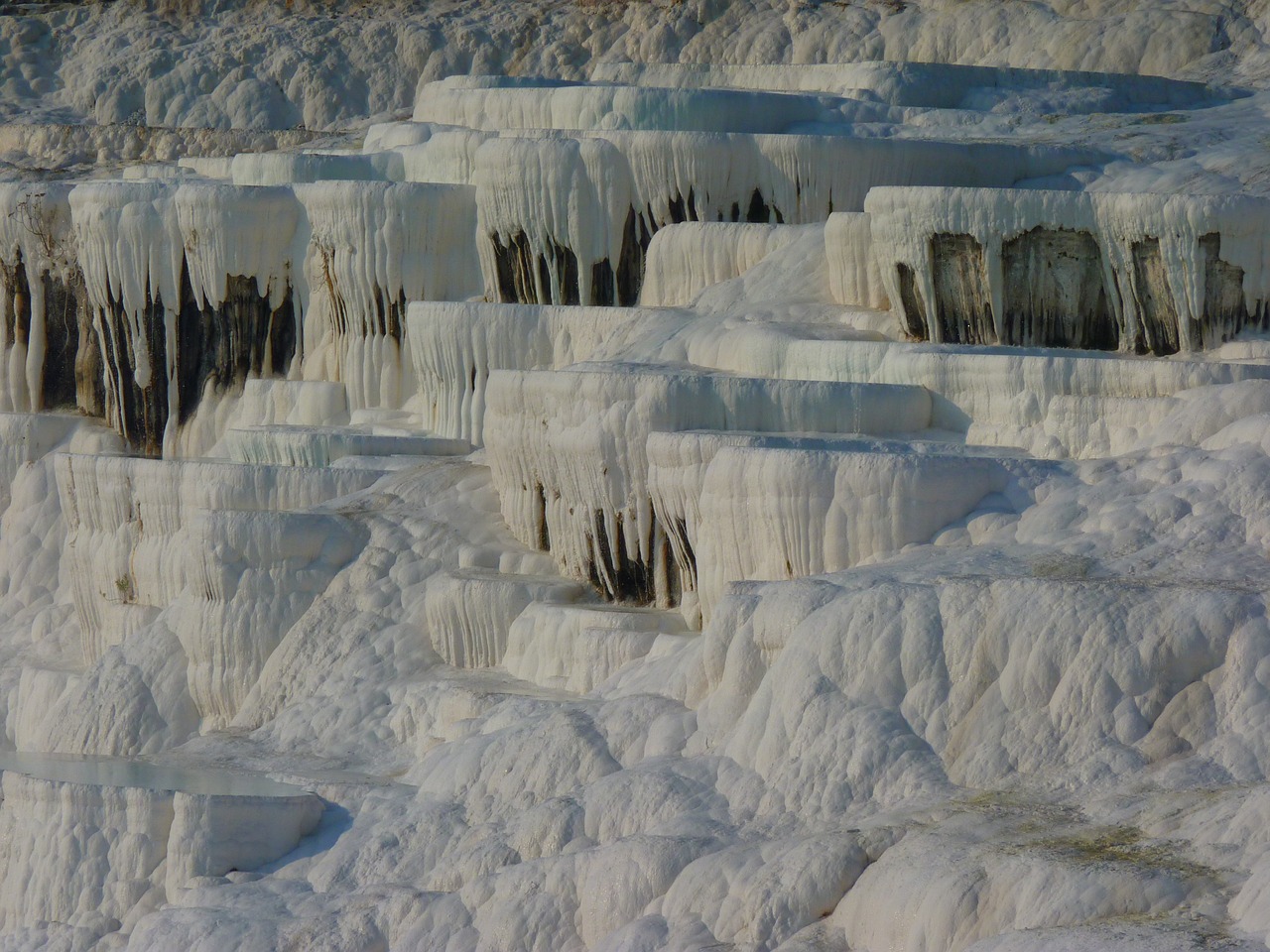
Image Processing Techniques
When it comes to thermal imaging, the clarity and accuracy of the images are paramount. That’s where step in, acting as the magical wand that transforms raw thermal data into clear and interpretable visuals. Imagine trying to make sense of a blurry photograph; without the right tools, it would be nearly impossible to identify the subject. Similarly, in thermal imaging, advanced processing techniques are essential for extracting meaningful information from the heat signatures captured by the technology.
One of the most critical aspects of image processing in thermal imaging is noise reduction. Noise refers to the random variations in brightness or color that can obscure important details. Think of it like trying to listen to your favorite song while a radio static buzzes in the background; it can be incredibly distracting. By employing sophisticated algorithms, thermal imaging systems can significantly reduce this noise, allowing for a clearer representation of the thermal landscape. Techniques such as Gaussian filtering and median filtering are commonly used to smooth out these irregularities, enhancing the overall image quality.
Another vital technique is contrast enhancement, which involves adjusting the brightness and contrast levels of the thermal images to make them more interpretable. This process is akin to turning up the brightness on your phone screen when you’re trying to read a message in bright sunlight. In thermal imaging, enhancing contrast allows for better differentiation between various heat sources. Methods such as histogram equalization and adaptive contrast enhancement are frequently utilized to achieve this goal. By redistributing the intensity values across the thermal image, these techniques ensure that even subtle temperature differences are highlighted, making it easier for operators to identify objects or individuals in low-light conditions.
Moreover, the integration of machine learning into image processing techniques has opened up new avenues for improving thermal imaging systems. For instance, neural networks can be trained to recognize specific patterns or objects within thermal images, providing real-time analysis and alerts. This capability is especially beneficial in applications like military surveillance or search and rescue missions, where time is of the essence, and quick decision-making is crucial.
In summary, the combination of noise reduction, contrast enhancement, and the application of machine learning algorithms forms the backbone of effective thermal imaging. These not only enhance the quality of thermal images but also improve the accuracy and reliability of the data collected, making them indispensable in various fields such as military operations, search and rescue, and wildlife monitoring.
- What is thermal imaging?
Thermal imaging is a technology that detects infrared radiation emitted by objects, allowing users to visualize heat patterns in various environments.
- How does AI improve thermal imaging?
AI enhances thermal imaging by utilizing algorithms that improve image clarity, reduce noise, and assist in object recognition.
- What are some applications of thermal imaging?
Thermal imaging is used in military operations, search and rescue missions, wildlife monitoring, and many other fields where visibility is limited.
- What techniques are used for image processing in thermal imaging?
Common techniques include noise reduction, contrast enhancement, and machine learning algorithms for better pattern recognition.

Noise Reduction Strategies
When it comes to AI-enhanced thermal imaging, one of the most critical challenges is dealing with noise in thermal images. Noise can obscure important details, making it difficult for operators to interpret the data accurately. Just like trying to listen to your favorite song while a blender is running in the background, noise in thermal imaging can drown out vital information. Fortunately, advanced noise reduction strategies are being developed to enhance image clarity and ensure that the important thermal signatures are visible.
One of the primary methods for reducing noise in thermal imaging is through the use of spatial filtering. This technique analyzes the pixels within a certain area and averages them to smooth out fluctuations caused by noise. Imagine smoothing out a bumpy road for a more comfortable drive; spatial filtering does something similar for thermal images. Another effective method is temporal filtering, which takes advantage of the fact that thermal images are often captured in a sequence. By comparing consecutive frames, algorithms can identify and reduce the noise that appears inconsistently across the frames.
Moreover, machine learning algorithms play a pivotal role in improving noise reduction strategies. By training on large datasets of thermal images, these algorithms learn to distinguish between noise and genuine thermal signals. This means that they can adaptively apply noise reduction techniques based on the context of the image, leading to better results. It's akin to having a personal assistant who knows exactly when to turn down the volume of background noise during a critical moment.
To give you a clearer picture of how these strategies work, here’s a simple comparison of traditional methods versus AI-enhanced approaches in noise reduction:
| Method | Traditional Approach | AI-Enhanced Approach |
|---|---|---|
| Spatial Filtering | Averages pixels in a defined area. | Adapts based on context learned from previous images. |
| Temporal Filtering | Compares consecutive frames. | Utilizes machine learning to predict and reduce noise. |
| Manual Adjustment | Requires human intervention to optimize settings. | Automatically adjusts settings for optimal clarity. |
In conclusion, the evolution of noise reduction strategies in AI-enhanced thermal imaging not only improves the quality of the images but also significantly enhances the decision-making capabilities of the operators. As technology continues to advance, we can expect even more sophisticated methods to emerge, ensuring that thermal imaging remains a powerful tool in various applications, from military operations to wildlife monitoring.
- What is noise in thermal imaging?
Noise refers to random variations in pixel values that can obscure important thermal information, making it difficult to interpret images accurately. - How does spatial filtering work?
Spatial filtering smooths out fluctuations by averaging pixel values in a defined area, helping to reduce noise in thermal images. - What role does AI play in noise reduction?
AI algorithms can learn from large datasets to distinguish between noise and genuine thermal signals, allowing for more effective noise reduction tailored to specific contexts. - Can noise reduction techniques be applied in real-time?
Yes, many AI-enhanced noise reduction techniques can operate in real-time, providing immediate clarity in thermal imaging applications.
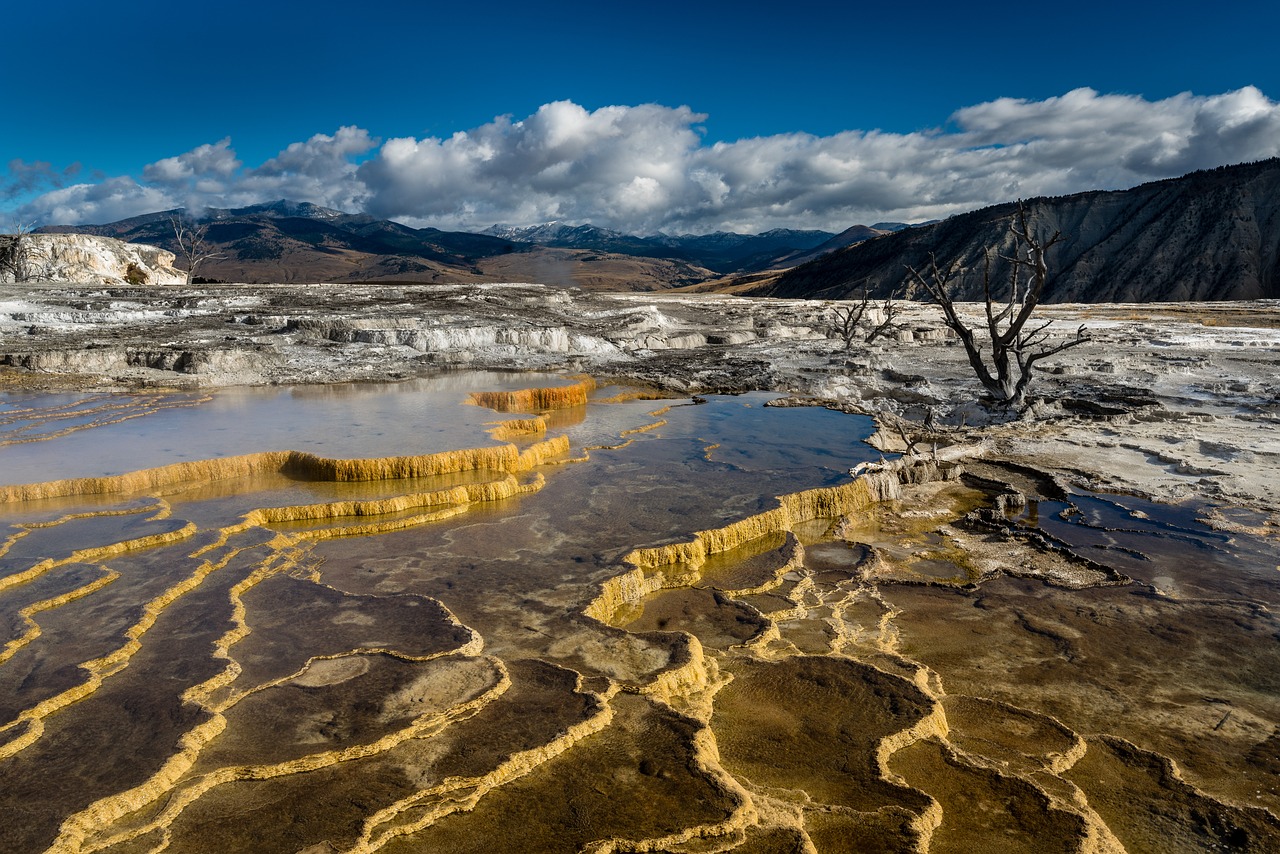
Contrast Enhancement Methods
When it comes to thermal imaging, contrast enhancement is a game changer. Imagine trying to read a book in dim light; the words blur together, making it nearly impossible to understand the text. Similarly, thermal images can be challenging to interpret without proper contrast. This is where various enhancement methods come into play, allowing users to distinguish between different thermal signatures more effectively.
One of the most widely used techniques for contrast enhancement is Histogram Equalization. This method redistributes the intensity levels of the thermal image, ensuring that the full range of temperatures is represented. It's akin to adjusting the brightness and contrast settings on your TV to make the colors pop. By stretching the histogram, this technique can reveal details that might otherwise go unnoticed, such as the subtle differences in heat emitted by objects in the environment.
Another popular approach is Adaptive Contrast Enhancement, which adjusts the contrast based on local areas within the image. Instead of applying a single enhancement factor across the entire image, this method tailors the contrast settings to different regions. Think of it like putting on reading glasses; suddenly, the text becomes clear, and you can focus on the important details. This technique is particularly useful in complex scenes where varying temperatures exist, allowing for better object recognition and analysis.
Furthermore, Gamma Correction is a method employed to adjust the luminance of the thermal images. By applying a nonlinear transformation to the pixel values, this technique can enhance the visibility of features that might be too dark or too bright. It’s similar to how a photographer uses filters to bring out the best in their shots. By fine-tuning the gamma value, operators can achieve a more balanced representation of the thermal data.
To provide a clearer understanding of these methods, here’s a brief comparison table outlining their characteristics and applications:
| Method | Description | Best Used For |
|---|---|---|
| Histogram Equalization | Redistributes intensity levels for better detail visibility. | General enhancement of thermal images. |
| Adaptive Contrast Enhancement | Adjusts contrast based on local areas for improved detail. | Complex scenes with varying temperatures. |
| Gamma Correction | Adjusts luminance to enhance visibility of features. | Images that are too dark or too bright. |
In conclusion, employing these can significantly improve the interpretability of thermal images, making them invaluable tools in various applications, from military operations to wildlife monitoring. As technology continues to advance, we can expect even more sophisticated methods to emerge, further enhancing our ability to visualize and analyze thermal data.
- What is thermal imaging?
Thermal imaging is a technology that detects infrared radiation emitted by objects, allowing visualization of heat patterns, especially in low-light conditions.
- How does AI improve thermal imaging?
AI enhances thermal imaging by improving image clarity, object recognition, and processing efficiency through advanced algorithms and machine learning techniques.
- What are the main applications of thermal imaging?
Thermal imaging is widely used in military operations, search and rescue missions, wildlife monitoring, and various industrial applications.
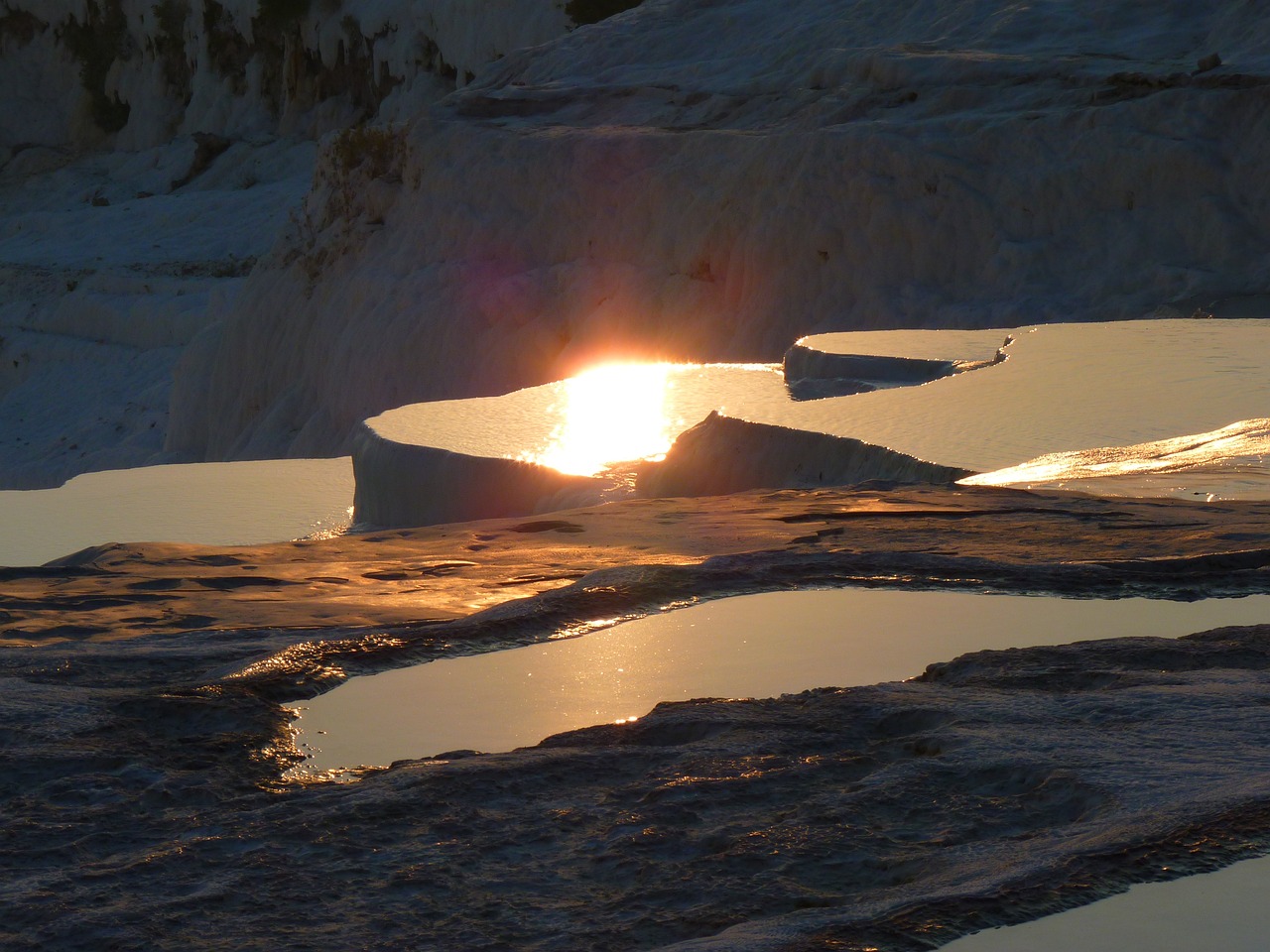
Applications in Military Operations
In the realm of military operations, the integration of AI-enhanced thermal imaging technology has revolutionized how armed forces conduct their missions. Imagine being able to see through the dark, where traditional vision fails, and pinpoint enemy positions or locate friendly troops with incredible accuracy. This capability isn't just a dream; it's a reality thanks to advancements in thermal imaging powered by artificial intelligence.
AI algorithms play a crucial role in enhancing the clarity of thermal images, allowing military personnel to interpret data more effectively. For instance, during nighttime operations, soldiers equipped with thermal imaging devices can detect heat signatures from vehicles, equipment, and even personnel, all while remaining concealed. This not only provides a tactical advantage but also significantly increases the safety of troops on the ground.
One of the standout applications of AI-enhanced thermal imaging in the military is in surveillance and reconnaissance. Utilizing drones equipped with advanced thermal cameras, military units can conduct aerial surveillance over vast areas without exposing themselves to danger. The drones can capture high-resolution images and relay real-time data back to command centers, allowing for informed decision-making. This capability is particularly useful in hostile environments where visibility is compromised.
Furthermore, the technology aids in target acquisition. By identifying and classifying heat signatures, AI systems can assist operators in determining whether a target is friend or foe. This is critical in preventing friendly fire incidents, which can have devastating consequences. The ability to quickly assess situations and make informed decisions can be the difference between mission success and failure.
To illustrate the impact of AI-enhanced thermal imaging in military operations, consider the following table:
| Application | Description | Benefits |
|---|---|---|
| Surveillance | Monitoring enemy movements from a distance. | Minimized risk to personnel, real-time data acquisition. |
| Target Acquisition | Identifying and verifying targets. | Reduction of friendly fire incidents, improved engagement accuracy. |
| Search and Rescue | Locating downed pilots or missing personnel. | Increased success rates in locating individuals in difficult terrain. |
In addition to these applications, AI-enhanced thermal imaging is also instrumental in search and rescue operations. When a soldier goes down or a pilot ejects from an aircraft, every second counts. Thermal imaging can help locate these individuals in challenging environments, such as dense forests or mountainous regions, where visual searches would be nearly impossible. The technology can detect body heat even through thick foliage, drastically increasing the chances of a successful recovery.
As military operations continue to evolve, the reliance on AI-enhanced thermal imaging will only grow. The combination of cutting-edge technology and tactical application is shaping the future of warfare, making operations more efficient and safer for all involved. With ongoing innovations, we can expect even greater advancements in how this technology is utilized, further enhancing the capabilities of our armed forces.
- What is thermal imaging? Thermal imaging is a technology that detects infrared radiation emitted by objects, allowing users to visualize heat.
- How does AI enhance thermal imaging? AI algorithms improve image clarity, reduce noise, and enhance object recognition, making thermal imaging systems more accurate.
- What are the military applications of thermal imaging? Thermal imaging is used for surveillance, target acquisition, and search and rescue operations, among other applications.
- Can thermal imaging be used in daylight? Yes, while thermal imaging is most effective in low-light conditions, it can also be used during the day to detect heat signatures.

Search and Rescue Operations
In the high-stakes world of search and rescue operations, every second counts. When disasters strike—be it natural calamities like earthquakes and floods or unfortunate accidents in remote areas—the ability to locate individuals quickly can mean the difference between life and death. This is where AI-enhanced thermal imaging steps in, revolutionizing the way rescuers approach their missions. By detecting heat signatures, this technology enables teams to visualize their surroundings in complete darkness, dense fog, or other low-visibility conditions.
Imagine a scenario where a hiker gets lost in the wilderness during the night. Traditional search methods can be time-consuming and often yield limited results. However, with AI-enhanced thermal imaging, rescue teams can scan vast areas rapidly, pinpointing heat sources that indicate human presence. This is not just a theoretical advantage; numerous real-world applications have demonstrated the effectiveness of this technology. For instance, during a recent search operation in a mountainous region, rescuers equipped with thermal imaging drones were able to locate a missing person within minutes, drastically reducing the risk of hypothermia and other life-threatening conditions.
Moreover, the integration of artificial intelligence into thermal imaging systems allows for real-time analysis and interpretation of data. AI algorithms can filter out irrelevant heat signatures, such as animals or environmental factors, ensuring that rescuers focus only on potential victims. This capability enhances decision-making processes, allowing teams to deploy resources more effectively. In challenging scenarios, such as urban rescues where buildings obstruct visibility, the ability to identify heat sources from a distance is invaluable.
Additionally, AI-enhanced thermal imaging can be combined with geospatial data to create detailed maps of the search area. By analyzing patterns and predicting likely locations of missing persons based on previous data, rescue teams can optimize their search strategies. This proactive approach not only saves time but also increases the likelihood of successful outcomes.
In summary, the impact of AI-enhanced thermal imaging in search and rescue operations is profound. It transforms the traditional methods of locating individuals, making them more efficient, accurate, and reliable. As technology continues to evolve, we can expect even greater advancements that will further improve the capabilities of rescue teams, ensuring that they can respond swiftly and effectively in the face of emergencies.
- How does AI enhance thermal imaging? AI improves thermal imaging by applying advanced algorithms that enhance image clarity, reduce noise, and improve object recognition.
- What are the main benefits of using thermal imaging in search and rescue? The main benefits include faster location of victims, improved decision-making through real-time data analysis, and the ability to operate effectively in low-visibility conditions.
- Can thermal imaging be used in urban environments? Yes, thermal imaging is highly effective in urban settings, where it can help locate individuals trapped in buildings or other obstructed areas.
- What future advancements can we expect in thermal imaging technology? Future advancements may include enhanced AI algorithms for even better image processing, integration with other technologies like drones, and improved portability for field use.
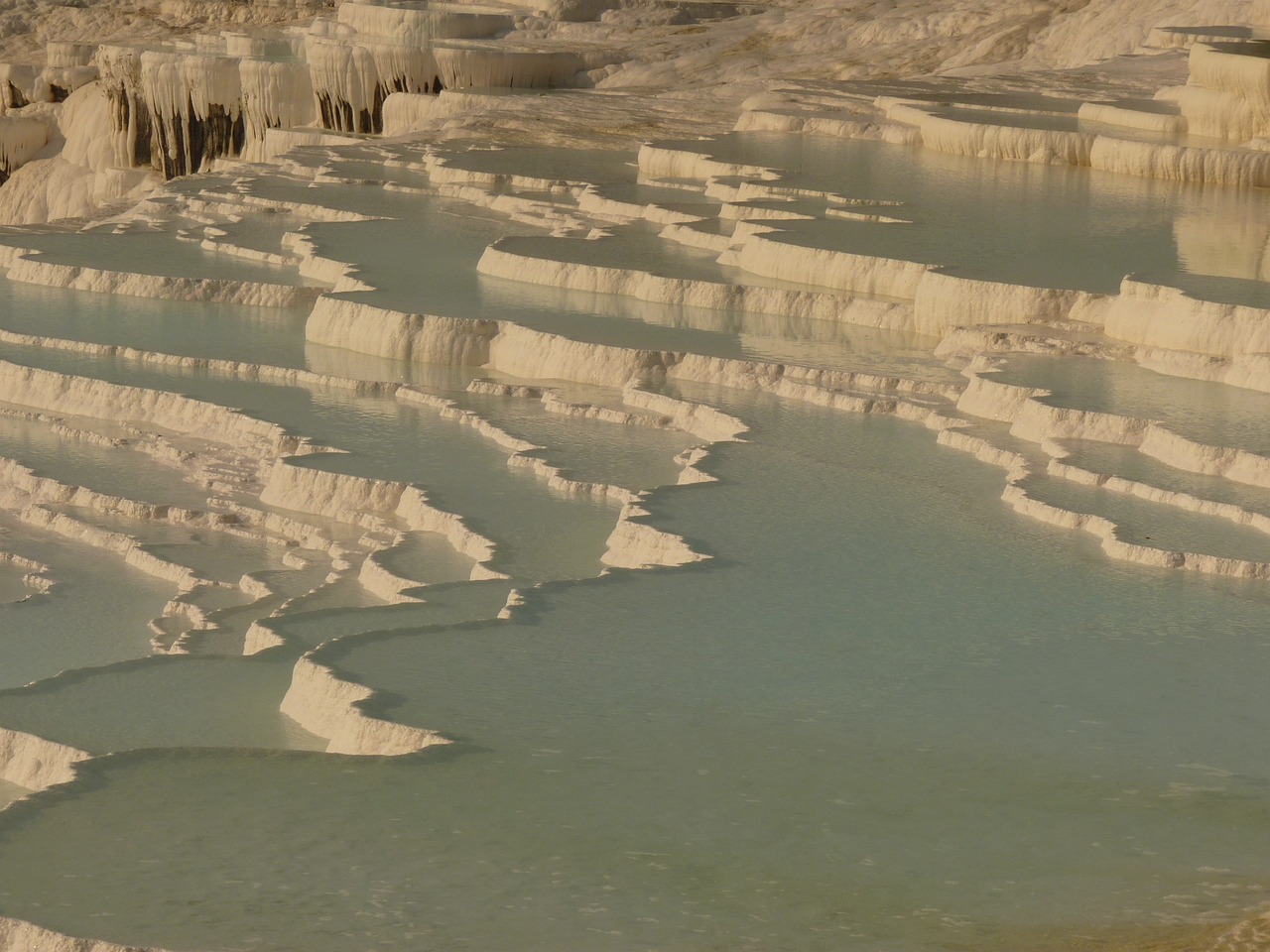
Wildlife Monitoring
When it comes to observing wildlife, traditional methods often come with their own set of challenges. Imagine trying to spot a deer in a dense forest at dusk; it’s like searching for a needle in a haystack, right? This is where AI-enhanced thermal imaging steps in, revolutionizing the way we monitor animal behavior and habitats. By detecting the infrared radiation emitted by animals, this technology allows researchers to see in total darkness, providing a clearer picture of wildlife dynamics than ever before.
One of the most exciting aspects of AI-enhanced thermal imaging is its ability to collect vast amounts of data while minimizing human disturbance in natural habitats. This is crucial because many animals are sensitive to human presence, which can alter their natural behavior. Thanks to advanced algorithms, thermal imaging can not only detect animals but also classify them with remarkable accuracy. For instance, a system powered by machine learning can differentiate between species based on their heat signatures, which is essential for conservation efforts.
Additionally, the integration of AI in thermal imaging systems allows for real-time data analysis. This means that researchers can receive immediate feedback on animal movements and behaviors, enabling them to make quick decisions. Imagine a conservationist tracking the migration patterns of endangered species; with AI-enhanced thermal imaging, they can adjust their strategies on the fly, leading to more effective conservation measures. This kind of adaptability is invaluable in the ever-changing landscape of wildlife management.
Moreover, the applications of this technology extend beyond just monitoring. For example, in ecological studies, researchers can gather data on habitat use, population density, and even stress levels among different species. The insights gained from thermal imaging can help inform policies and practices aimed at protecting vulnerable wildlife. In fact, many organizations are now incorporating AI-enhanced thermal imaging into their research methodologies, recognizing its potential to provide a more comprehensive understanding of ecosystems.
To illustrate the impact of AI-enhanced thermal imaging in wildlife monitoring, consider the following table that highlights some key benefits:
| Benefit | Description |
|---|---|
| Increased Accuracy | AI algorithms improve species identification and behavior analysis. |
| Minimized Disturbance | Non-invasive monitoring allows for natural behavior observation. |
| Real-Time Data | Immediate insights lead to timely conservation actions. |
| Comprehensive Data Collection | Gathering extensive data on various species and habitats. |
In summary, AI-enhanced thermal imaging is not just a technological advancement; it’s a game-changer in the field of wildlife monitoring. By providing researchers with the tools to observe and analyze wildlife in ways that were previously unimaginable, we are better equipped to protect our planet's biodiversity. As we continue to innovate and refine these technologies, the future of wildlife conservation looks brighter than ever.
- What is thermal imaging?
Thermal imaging is a technology that detects infrared radiation and visualizes the heat emitted by objects, allowing us to see in low-light conditions. - How does AI enhance thermal imaging?
AI improves thermal imaging by using algorithms for better image clarity, object recognition, and real-time data analysis, making it easier to monitor wildlife. - What are the benefits of using thermal imaging for wildlife monitoring?
Benefits include increased accuracy in species identification, minimized disturbance to wildlife, real-time data collection, and comprehensive ecological insights. - Can thermal imaging be used in all weather conditions?
Yes, thermal imaging can be effective in various weather conditions, including darkness, fog, and rain, making it a versatile tool for wildlife monitoring.

Future Trends in Thermal Imaging
The future of thermal imaging technology is not just bright; it's positively glowing with possibilities! As we stand on the brink of a new era in this field, the integration of artificial intelligence (AI) is set to revolutionize how we perceive and utilize thermal imaging. Imagine a world where thermal cameras can not only detect heat signatures but also interpret them with unprecedented accuracy. This is not just a dream; it's becoming a reality as advancements in AI continue to unfold.
One of the most exciting trends is the development of real-time image analysis. With AI algorithms constantly learning and improving, thermal imaging systems will soon be able to provide instant feedback, allowing users to make quick decisions based on current data. This capability is particularly crucial in high-stakes environments like military operations or search and rescue missions, where every second counts. Think about it—what if a thermal camera could instantly identify a heat signature and alert the operator to potential threats or targets? The implications are staggering!
Moreover, the integration of machine learning will enhance the ability of thermal imaging systems to adapt to different environments. For instance, AI can analyze patterns in thermal data over time, allowing it to distinguish between normal and anomalous heat signatures. This could be invaluable in wildlife monitoring, where understanding animal behavior is essential for conservation efforts. By recognizing typical patterns, AI can help researchers quickly identify when an animal is behaving unusually, signaling potential health issues or environmental changes.
Another key trend is the miniaturization of thermal imaging devices. With advancements in sensor technology, we can expect to see smaller, lighter, and more portable thermal cameras. This means that thermal imaging will become more accessible to a wider range of users, from outdoor enthusiasts to conservationists. Imagine being able to carry a thermal camera in your backpack that weighs less than a bottle of water! The democratization of this technology will open new avenues for exploration and research.
Additionally, the future will likely see the convergence of thermal imaging with other technologies. For example, combining thermal imaging with augmented reality (AR) could create immersive experiences for users. Picture this: a firefighter enters a burning building, and through AR goggles, they can see thermal data overlaid on their field of view, highlighting hot spots and potential hazards. This integration could redefine safety standards in various industries, making operations not only more efficient but also significantly safer.
Lastly, as we look to the future, we must also consider the ethical implications of advanced thermal imaging technology. With the ability to detect heat signatures from great distances, privacy concerns will inevitably arise. It's essential for developers and users alike to navigate these challenges responsibly, ensuring that the benefits of this incredible technology are balanced with respect for individual privacy.
- What is thermal imaging? Thermal imaging is a technology that detects infrared radiation emitted by objects, allowing users to visualize heat patterns and differences in temperature.
- How does AI enhance thermal imaging? AI improves thermal imaging by enhancing image clarity, object recognition, and real-time analysis, making it easier to interpret thermal data accurately.
- What are some applications of thermal imaging? Thermal imaging is used in various fields, including military operations, search and rescue missions, wildlife monitoring, and building inspections.
- What are future trends in thermal imaging? Future trends include real-time image analysis, machine learning integration, miniaturization of devices, and the convergence of thermal imaging with augmented reality.
Frequently Asked Questions
- What is thermal imaging?
Thermal imaging is a technology that detects infrared radiation emitted by objects, allowing users to visualize heat patterns. It's particularly useful in low-light conditions, enabling the identification of living beings and objects based on their heat signatures.
- How does AI enhance thermal imaging?
AI enhances thermal imaging by utilizing advanced algorithms to improve image clarity and object recognition. Machine learning and neural networks analyze thermal data, making it easier to distinguish between different heat sources and improving the overall accuracy of the imaging systems.
- What are the key applications of AI-enhanced thermal imaging?
AI-enhanced thermal imaging is widely used in various fields, including military operations for surveillance and target acquisition, search and rescue missions to locate individuals in distress, and wildlife monitoring to study animal behaviors and habitats effectively.
- What image processing techniques are used in thermal imaging?
Several image processing techniques are employed in thermal imaging, such as noise reduction and contrast enhancement. These methods help optimize thermal images, making them clearer and more interpretable for users, especially in challenging environments.
- Why is noise reduction important in thermal imaging?
Noise reduction is crucial in thermal imaging because it enhances the clarity of the images. By minimizing unwanted disturbances, rescuers and military personnel can better interpret thermal data, leading to more accurate assessments and decisions in critical situations.
- What future trends can we expect in thermal imaging technology?
The future of thermal imaging is bright, with ongoing advancements in AI technology. We can expect innovations that improve image quality, increase automation in data analysis, and expand the range of applications across various industries, making thermal imaging even more effective.





